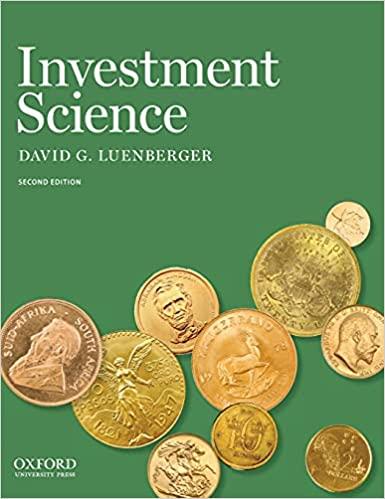Answered step by step
Verified Expert Solution
Question
1 Approved Answer
Consider a 2-year American call option on a non-dividend paying stock. S(0)=100,K=105,r=5%,u=1.1,d=0.9. The option is modeled with a 2-period binomial tree. (a) Suppose investor A

Step by Step Solution
There are 3 Steps involved in it
Step: 1

Get Instant Access to Expert-Tailored Solutions
See step-by-step solutions with expert insights and AI powered tools for academic success
Step: 2

Step: 3

Ace Your Homework with AI
Get the answers you need in no time with our AI-driven, step-by-step assistance
Get Started


